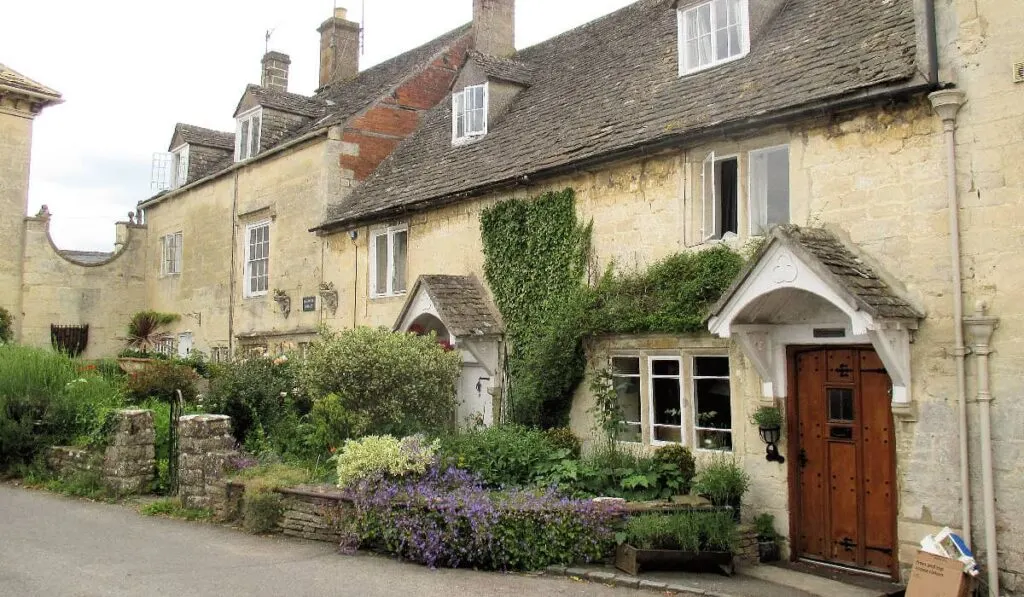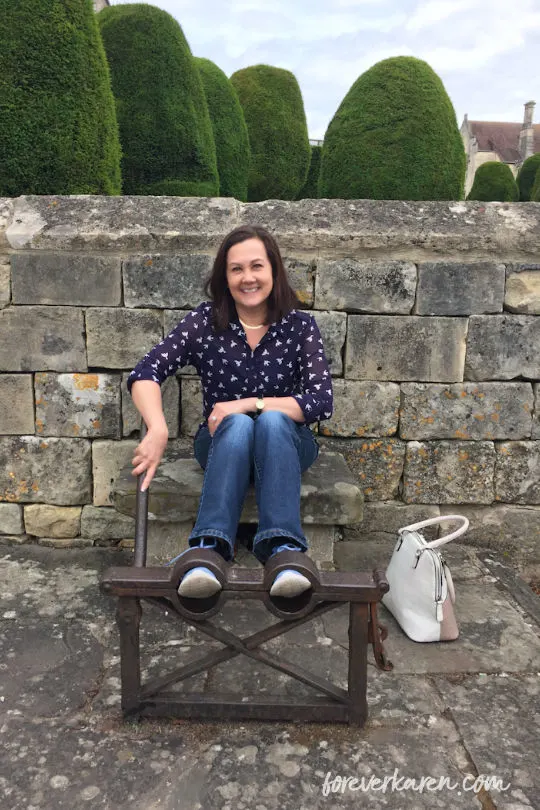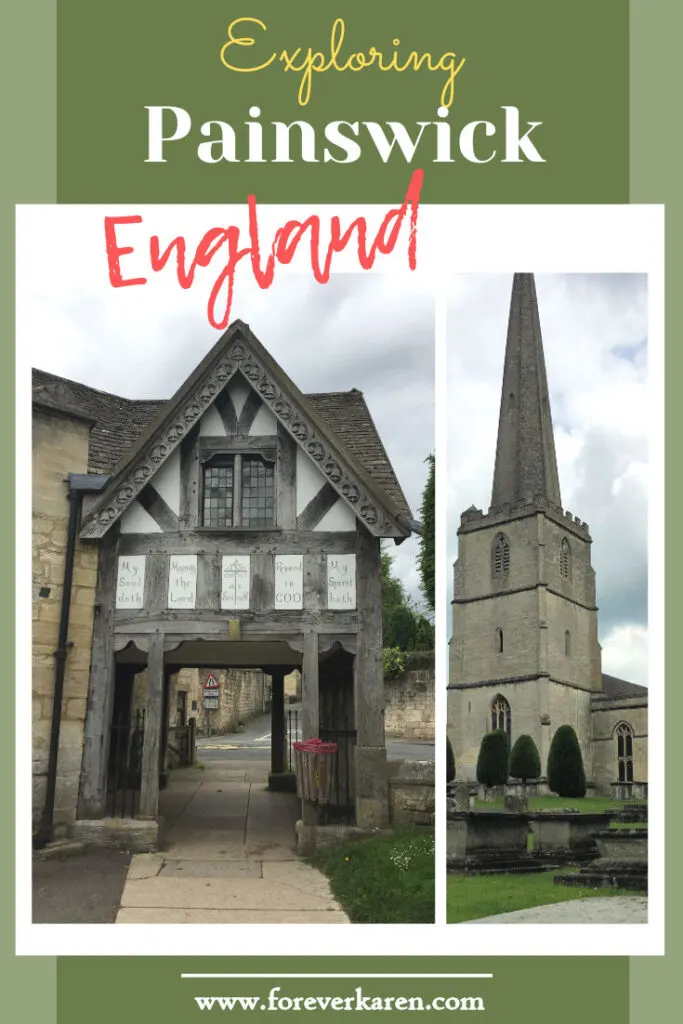
While the Cotswolds flourishes with an abundance of charming towns, there are none quite as quaint as Painswick, Gloucestershire.
Known as the ‘Queen of the Cotswolds,’ Painswick boasts a collection of Cotswold stone buildings, most of which are as historic as the village. The stone is a type of limestone dug from quarries in the surrounding area.
At first glance, this tiny town resembles a sleepy hollow, yet its charm and history attract visitors galore during the warmer months.
If you’re looking for a lovely Cotswold village to explore and want to escape the hustle and bustle of Bourton-On-The-Water or Cirencester, this is the picture-perfect hideaway.
Where Is Painswick?
- Location: Gloucestershire on the A46
The Queen of the Cotswolds is located in the heart of Gloucestershire, on the A46 between Gloucester, Stroud, and Cheltenham. It’s 17 miles north of the must-visit Berkeley Castle and 18.5 miles southwest of Sudeley Castle in Winchcombe.
Like many of its neighbors, it’s another Cotswolds village that grew out of the weaving and wool trade. In fact, Painswick is one of Britain’s oldest and, dare I say, most charming mill towns still in existence.
Today, some evidence of the mill trade remains in the village’s stone cottages. As the cloth and wool trade declined, local merchants left the area.
As a result, new structures did not replace the original homes. So, when you explore Painswick, you’ll discover buildings from hundreds of years ago.
Where To Stay
If you plan to stay in Painswick, the accommodation varies from beautiful limestone hotels to cozy cottages and bed and breakfast lodgings.
Croft House Guest Suite offers lovely views from its hilltop location in Painswick. Guests enjoy complimentary WiFi and a fantastic breakfast.
Troy House, Gloucester St. A cozy bed and breakfast that offers great service at a good value.
St. Anne’s Bed and Breakfast is highly rated in the heart of Painswick.
Court House Manor, Hale Ln. A high-end bed and breakfast in a beautifully landscaped setting.
Tibbiwell Lodge is a beautiful sandstone home in a quiet setting, just a 3-minute walk to Painswick.
The Parish Church Of St Mary’s
- Location: 3 New Street, Painswick

Strolling through Painswick, the most striking property is the Parish Church and churchyard. In fact, the churchyard holds a fascinating collection of ancient tombs and a stunning planting of yew trees that are reminiscent of a fairy tale.
Pruned immaculately with undulating curves and evergreen arches, I felt like Alice in Wonderland. No longer was I in the Queen of the Cotswolds but the Queen of Hearts garden instead.
Suddenly, I realized this was the reason why most travelers visit Painswick, Gloucestershire.
The early part of the church is St. Peter’s Chapel which dates back to 1377. In the following century, new sections of the church were added. Over the years, the local church has been altered numerous times.

The Yews
The yews are a horticultural masterpiece. I couldn’t imagine the work that goes into keeping them manicured. Every September, the tree trimming event creates two tons of clippings which aid in creating anti-cancer medication.
According to folklore, only 99 yew trees can grow on the grounds. If a 100th tree is planted, it’s believed the devil will remove it. However, the 100th tree was planted for the millennium, and at last count, over 100 yews still grow in the churchyard.
We tried counting the trees but kept getting different answers. Please take my word for it, don’t count the yews! Intermingled amongst the two acres of magnificent yew trees are a collection of historic tombs marking the resting places of wealthy wool merchants.
These vary in design from the traditional upright headstone to an ornate rounded tea caddy tomb. Judging from the intricately carved treasures, some of the interned died with great wealth.
Over time, the weather has taken its toll on these memorials, but some were still readable. Walking the church grounds, I found a group of fallen tombstones propped up against the fence.
Painswick Stocks
- Location: St. Mary’s Street, Painswick
Immediately south of the local churchyard, I found the town’s iron stocks. In ancient times, the locals punished criminals with the use of these stocks.

Because of their shape, they are known as spectacle stocks. These stocks are extremely rare, with only one other similar set known. Today, these 1840 stocks made for a candid photoshoot.
Donkey Doors
From the mid-15th century to the 19th century, the wool and cloth trade flourished in Painswick, Gloucestershire. Back then, packhorses and donkeys transported the wool and woven cloth.
Donkey doors were constructed broader and lower than regular doorways to allow the donkeys and carts to fit through to deliver the yarn from the mills.
Some of these doors still exist today, and two examples are found at The Chur on Bisley Street and another at the Byfield House.
The Bowling Green
- Location: Behind Falcon Inn, New Street, Painswick
The Falcon Inn, Painswick, is said to contain the oldest bowling green in Britain. Dating back to the mid-1550s, it’s currently used by the Falcon Bowling Club.
The group meets regularly and invites non-members to bowl for free on Friday nights. Once you’ve worked up an appetite, pop into the inn for a warm welcome and a delicious meal.
Exploring The Queen Of The Cotswolds
As an ex-pat, I find the golden honey-colored buildings of the Cotswolds so charming. They ooze so much character that the wooden structures in North America are sadly lacking.
It’s the beauty of the Cotswolds and ancient castles (and family, of course) that brings me back to my homeland again and again. During my visit, I explored the narrow winding streets of this old mill town, admiring the stone buildings.
The small English wildflower gardens were blooming, which added to the charm of the stone cottages. Many of the buildings had informational plaques listing their origins.
One was a slaughterhouse, one a maternity home, another a bathhouse, and numerous alehouses. Origin photos showed shots from ancient times, even one with sheep in the streets.
Looking down Hale Lane, I savored the stunning stone walls and sweeping views of the Cotswolds countryside. Outside the Vicarage Cottage, I adored the twig fence, which was intricately interwoven like a sprig blanket.

At mid-day, we stopped for lunch at Olivas, an absolute gem on Friday Street. This family-owned deli has an intimate dining area that can only accommodate a small crowd. But the food is fresh, homemade, and utterly delicious.

Painswick Beacon
While the Queen of the Cotswolds sits at a high altitude, there are no better views of the spectacular Severn Valley than from the Painswick Beacon.
This vantage point requires a 2-hour roundtrip stroll from the village centre. From the top of the beacon and on a clear day, the 360-degree views of Gloucester, Cheltenham, and onwards to Wales are incredible.
While the hike is not strenuous, it does, however, not provide a lot of cover on a hot day. Enjoy the stroll through woodland, fields, and even a golf course. Watch out for stray golf balls when hiking to the beacon.
Painswick Rococo Gardens
- Location: Gloucester Rd, Painswick
Outside the center of town, the Painswick Rocco Gardens transports you to an 18th-century horticultural paradise. A visit in early spring is a must to see the grounds covered in a blanket of beautiful white snowdrops.
Nestled in a nearby valley, the fantasy gardens showcase beautiful water features, a stunning plunge pool, and a spectacular maze. The maze is particularly interesting.
It spells out ‘250’, which commemorates the 250th anniversary of Thomas Robins’ painting of the gardens. The challenge of the maze is to reach the center of the ‘5’, which is much more challenging than it looks.
Not only are the gardens delightful, but visitors can enjoy a unique collection of artwork scattered on the grounds. These varied from Cotswolds hares to deer made of sticks.
One fallen tree was introduced to chainsaw artist Denius Parson who carved a magnificent castle on top inspired by the Schloss Neuschwanstein in Bavaria.
Other Areas Outside Painswick
If craving more after the Queen of the Cotswolds, check out Cirencester, Bourton-on-the-Water, Stow-on-the-Wold, Lechlade-on-Thames, and Gloucester. Gloucester Cathedral with its gorgeous cloisters is one of Britain’s most notable cathedrals and the filming location of some Harry Potter films.
Happy travels ~ Karen


